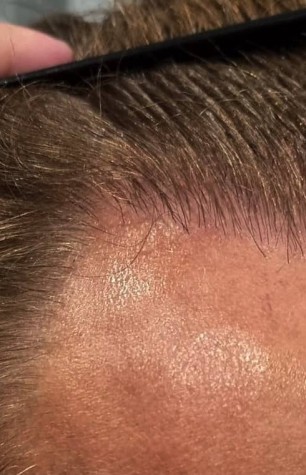Mental Health
The Hidden Costs of Pornography: A Scientific Perspective on Its Negative Effects

Alone in the dark: A growing number of men struggle silently with pornography addiction, facing emotional distress, relationship strain, and mental health consequences in the digital age. | (Photo : Image generated using AI (Gemini))
In the digital era, pornography has become one of the most widely consumed forms of media, accessible to anyone with an internet connection. While it's often viewed as a private or even harmless activity, a growing body of research suggests that regular and especially compulsive pornography consumption can have profound effects on mental health, brain function, relationships, and self-perception.
This article explores the scientific evidence behind the negative effects of pornography and why this topic deserves closer attention from healthcare professionals, educators, and the public alike.
1. Pornography and Mental Health
Numerous studies have established a link between frequent pornography use and symptoms of depression, anxiety, loneliness, and low self-esteem. One longitudinal study published in JAMA Psychiatry found that increased pornography viewing among adolescents was associated with reduced gray matter in regions of the brain responsible for reward and motivation .
A review published in Behavioral Sciences concluded that problematic pornography use often co-occurs with anxiety, depression, and social isolation, especially when users develop compulsive behaviors.
2. Neuroscience of Pornography: Rewiring the Brain
Pornography activates the brain's mesolimbic reward system, releasing dopamine in a similar way to substances like cocaine or opioids. Over time, repeated stimulation can lead to tolerance, desensitization, and even addiction-like behavior.
A study from Frontiers in Human Neuroscience found that individuals who consumed pornography excessively exhibited reduced activity in brain regions associated with decision-making and impulse control [3].
3. Impact on Relationships and Sexual Satisfaction
Pornography consumption can significantly affect romantic and sexual relationships. Studies have shown that excessive porn use is correlated with:
-
Reduced sexual satisfaction
-
Lower relationship quality
-
Less interest in actual sexual intimacy
A large survey published in the Journal of Sex Research found that higher pornography use predicted lower sexual satisfaction among both men and women, particularly when it was secretive or conflicted [4].
4. Sexual Dysfunction and Unrealistic Expectations
Pornography often portrays highly exaggerated or unrealistic depictions of sex, leading to misinformed expectations about performance, consent, and body image.
The phenomenon of porn-induced erectile dysfunction (PIED) has been increasingly documented. A 2016 article in Behavioral Sciences proposed that some men experience difficulty achieving arousal in real-life scenarios due to overstimulation from online pornography.
5. Adolescents and Early Exposure
Early exposure to pornography - which often occurs during adolescence - is associated with distorted perceptions of sex, unhealthy attitudes toward consent, and higher risk of engaging in risky sexual behavior. A meta-analysis in Developmental Psychology found that adolescents exposed to pornography were more likely to develop permissive sexual attitudes and engage in sexual activity at younger ages.
The American Psychological Association has expressed concern that pornographic media can negatively influence developing minds, particularly when it replaces conversations about empathy, respect, and communication in sexual contexts.
6. Links to Aggression and Objectification
Some studies suggest that repeated exposure to violent or aggressive pornography may reduce empathy toward victims of sexual violence and increase acceptance of rape myths. A study in Aggressive Behavior found that consumption of violent porn was correlated with more accepting attitudes toward interpersonal aggression.
Additionally, pornography can reinforce gender stereotypes and promote the objectification of both women and men, shaping unrealistic ideals of attractiveness and sexual performance.
7. When to Seek Help
If pornography consumption becomes compulsive, causes distress, or interferes with daily functioning, it may be categorized under Compulsive Sexual Behavior Disorder, now included in the ICD-11 by the World Health Organization.
Signs you might need help include:
-
Inability to stop despite negative consequences
-
Escalation to more extreme content
-
Loss of interest in real-world intimacy
-
Feelings of guilt, shame, or anxiety
Resources such as Psychology Today's therapist directory or Sex Addicts Anonymous can help individuals seeking professional or peer-based support.
Pornography is not inherently harmful in moderation, but the scientific literature clearly shows that frequent, compulsive, or early exposure can lead to a range of psychological, neurological, and relational issues. As with any behavior that alters the brain's reward system, awareness and education are key. Open discussions, healthy boundaries, and professional support can empower individuals to take control of their mental and emotional health in a hypersexualized digital landscape.









Join the Conversation